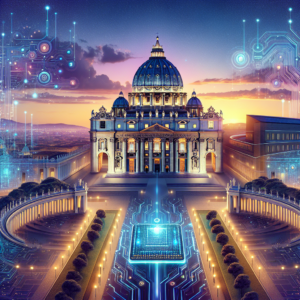Elon Musk Ally Tells Staff ‘AI-First’ Is the Future of Key Government Agency
When it comes to the integration of artificial intelligence (AI) into government operations, few voices resonate as powerfully as that of Elon Musk. Recently, one of his prominent allies has made headlines by emphasizing the importance of adopting an “AI-first” approach within a key governmental agency. This shift signals a transformative vision for the future of government operations, indicating that AI technology will not simply be an auxiliary tool, but rather the cornerstone of how public services are developed and delivered.
The Context Behind the AI-First Strategy
In an era where technology evolves at breakneck speed, government agencies face increasing pressure to adapt and innovate. The advent of AI presents both challenges and opportunities. Traditionally, governmental operations have been characterized by bureaucratic processes that can be slow and unyielding. These limitations can stifle innovation and hinder the delivery of effective services to citizens. The push for an “AI-first” strategy is seen as a necessary evolution to overcome these barriers.
The ally of Musk, who has taken a leadership role in advocating for this transformation, believes that the integration of AI will streamline processes, enhance decision-making, and ultimately lead to better service delivery. By prioritizing AI in government functions, the agency aims to break free from traditional practices that often delay progress.
The Potential Benefits of an AI-First Approach
There are numerous potential benefits associated with implementing an “AI-first” strategy within a government agency:
1. Enhanced Efficiency: AI can automate routine tasks, allowing staff to focus on more complex issues. This leads to increased productivity and faster response times to citizen inquiries and needs.
2. Improved Decision-Making: AI technologies, such as machine learning and predictive analytics, can analyze vast amounts of data to provide insights that inform decision-making. This data-driven approach can enhance policy formulation and resource allocation.
3. Personalized Services: With the help of AI, government agencies can offer more personalized services to citizens. By analyzing individual data and preferences, agencies can tailor their offerings for improved satisfaction.
4. Proactive Problem-Solving: Rather than reacting to issues as they arise, AI can help identify potential problems before they occur, enabling preventative measures to be put in place.
5. Cost Reduction: Automation of mundane tasks can lead to significant cost savings over time, allowing for reallocation of resources to other critical areas.
Challenges and Considerations
Despite the numerous advantages that come with an AI-first strategy, the path to implementation is fraught with challenges. One of the most pressing concerns is the ethical implications of AI deployment in government operations. Issues such as data privacy, security, and algorithmic bias must be carefully navigated to ensure that the technology serves all citizens equitably.
Moreover, there is the question of technological readiness. Many government agencies may lack the necessary infrastructure or expertise to effectively integrate AI into their operations. Training existing staff and hiring new talent with the required skills will be paramount to the successful implementation of an AI-first strategy.
Interdepartmental Coordination is another obstacle that needs addressing. Government operations are often siloed, and a cohesive strategy that promotes collaboration between departments will be essential to leverage AI technologies fully.
The Role of Leadership in Shaping an AI-First Culture
Leadership plays a critical role in fostering an organizational culture that embraces change and innovation. The ally of Elon Musk, who is championing the AI-first initiative, is tasked with not only advocating for AI integration but also cultivating an environment where staff members feel empowered to embrace new technologies.
Establishing clear communication about the goals and benefits of an AI-first strategy will be essential in easing concerns and building buy-in from employees. It’s also important to highlight that while AI can augment human capabilities, it is not a replacement for the invaluable insights and empathy that human employees provide.
To facilitate a successful transition, leadership should consider implementing pilot programs that showcase the potential of AI technologies. By demonstrating tangible benefits through smaller-scale projects, staff will be more likely to support wider adoption.
The Future of Government with AI
As the world moves towards increased reliance on technology, the government sector must evolve in tandem. An AI-first approach is not just a trend; it represents a fundamental shift in how governmental agencies will operate in the future.
With the right frameworks in place, AI has the potential to revolutionize public service delivery, making it more efficient, responsive, and personalized. As more government leaders take cues from the likes of Elon Musk and his allies, the vision of a seamless integration of AI into government will come closer to reality.
Conclusion
The endorsement of an “AI-first” strategy by a key ally of Elon Musk is both a bold and necessary move for governmental agencies looking to modernize operations. The potential benefits of increased efficiency, improved decision-making, and personalized services are compelling reasons to embrace this shift. However, overcoming the challenges associated with ethical considerations, technological readiness, and interdepartmental coordination will be paramount in this transformation.
As we look to the future, it is clear that AI will play a central role in shaping the landscape of government services. With thoughtful leadership and a commitment to innovation, the vision of an AI-first government can lead to a more effective and responsive public sector—a goal worth striving for in an increasingly complex world.



